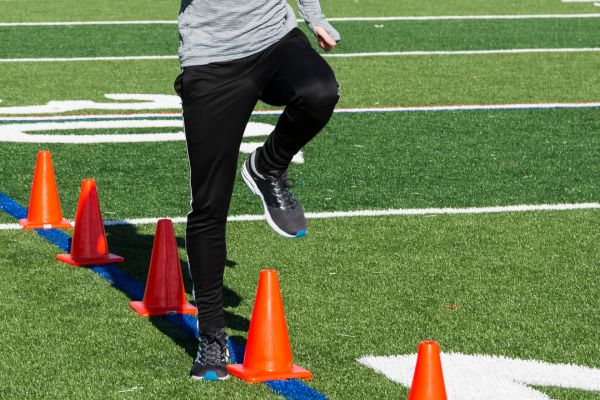In the fast-paced world of soccer, agility is more than just a desirable skill—it is an essential element that can define a player’s performance on the field. Soccer agility drills are designed to enhance quickness, improve reaction times, and develop superior footwork that gives players a competitive edge. Whether you are an aspiring athlete or a seasoned professional, mastering these drills can make a significant difference in your game.
The Importance of Agility in Soccer
Agility in soccer goes beyond speed. It involves the ability to change direction swiftly, maintain balance under pressure, and react effectively to unpredictable situations during a match. Players with high agility can maneuver around defenders, make sharp turns, and recover quickly after challenging plays. This makes agility training a crucial component of any soccer conditioning program.
Soccer agility drills target specific aspects of movement such as lateral speed, coordination, and explosive acceleration. These drills help build a foundation for fluid motion on the pitch, enabling players to outmaneuver opponents and create scoring opportunities.
Building Quickness Through Dynamic Movements
One of the core objectives of soccer agility drills is to develop dynamic quickness. This means improving the ability to accelerate, decelerate, and change directions with precision. Incorporating exercises that focus on multidirectional movements is key to achieving this. For instance, shuttle runs or cone drills encourage players to perform rapid lateral and forward-backward transitions, mimicking the demands of actual gameplay.
Moreover, performing agility drills at game speed conditions the body to respond instinctively. Players learn to maintain control of the ball while navigating tight spaces, a skill that often separates good players from great ones.
Enhancing Footwork and Coordination
Excellent footwork is the hallmark of top soccer performers. Soccer agility drills that emphasize precise foot placement and coordination are instrumental in refining this skill. Ladder drills, for example, challenge athletes to execute intricate foot patterns that improve neuromuscular connection and reaction time. The enhanced coordination gained from these exercises directly translates into improved dribbling, passing, and defensive maneuvers on the field.
As players advance through agility training, their ability to combine quick feet with strategic ball control becomes second nature. This synergy enables seamless execution of complex plays, giving players the confidence to take on any challenge during a match.
The Role of Balance and Stability in Agility
Agility is not solely about speed and direction changes; it also relies heavily on balance and stability. Soccer agility drills often incorporate exercises that require maintaining equilibrium under dynamic conditions. Activities like single-leg hops and lateral bounds challenge the body’s core and stabilizing muscles, creating a stronger foundation for agile movement.
Improved balance allows players to stay on their feet during tackles and physical challenges. It also helps them recover swiftly after sudden stops or directional shifts, maintaining momentum and flow in the game.
Progressing Agility Training for Optimal Results
Consistency and progression are vital when integrating soccer agility drills into a training routine. Beginners can start with basic movements to build a solid base, while advanced players can elevate their sessions by increasing intensity or adding resistance. Incorporating tools like resistance bands, weighted vests, or reaction balls can further challenge agility and reaction times.
Additionally, combining agility drills with ball-handling exercises replicates real-game scenarios more effectively. This approach ensures that players are not only quick and nimble but also proficient in controlling the ball while executing agile movements.
Psychological Benefits of Agility Training
While physical improvements are the most visible outcomes of soccer agility drills, the psychological benefits are equally impactful. Agility training enhances cognitive processing speed, allowing players to make split-second decisions under pressure. As a result, athletes develop sharper tactical awareness and improved anticipation skills.
Mental agility translates to superior performance during high-pressure moments in games. Players become more adept at reading opponents’ movements and adjusting their strategies accordingly, giving them a psychological edge.
Bringing It All Together on the Field
When performed consistently, soccer agility drills can transform a player’s ability to dominate the field. From dribbling past defenders to executing precise defensive tackles, the agility gained through targeted drills empowers players to perform at their highest level. The seamless integration of speed, balance, coordination, and ball control creates a complete athlete capable of excelling in all aspects of the game.
Conclusion: Elevate Your Game with Soccer Agility Drills
In the modern era of soccer, where matches are often decided by moments of brilliance, agility stands as a cornerstone of success. By incorporating well-designed soccer agility drills into your training regimen, you lay the groundwork for exceptional footwork, lightning-fast reflexes, and superior on-field performance. These drills not only build physical capabilities but also sharpen mental acuity, preparing players to face any challenge with confidence and precision.
Start focusing on agility today and experience the transformation in your game. With dedication and consistent practice, you can master the art of agile movement and elevate your soccer performance to new heights.





